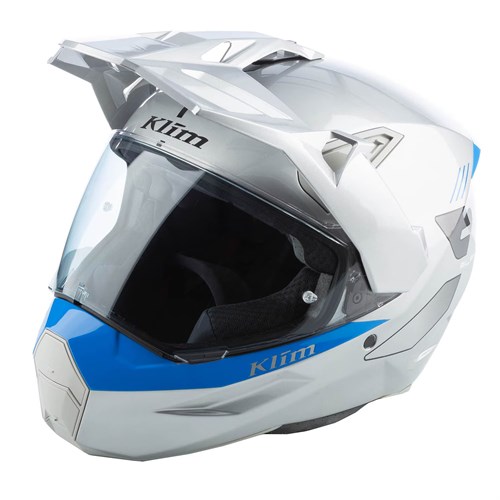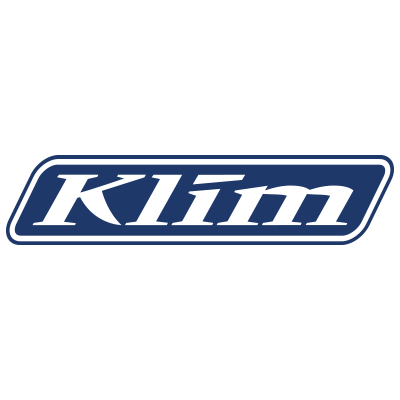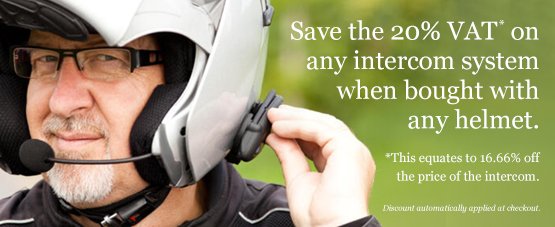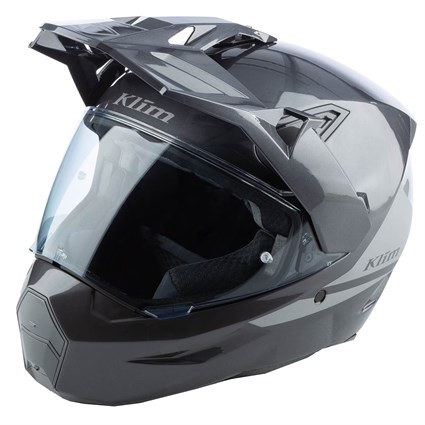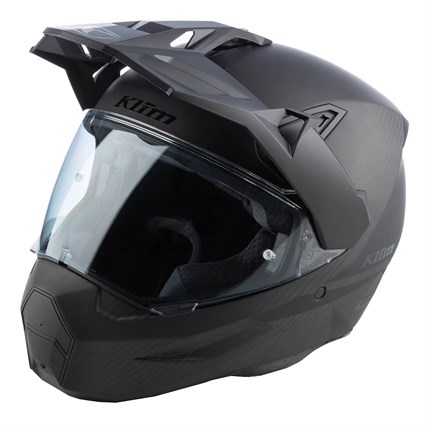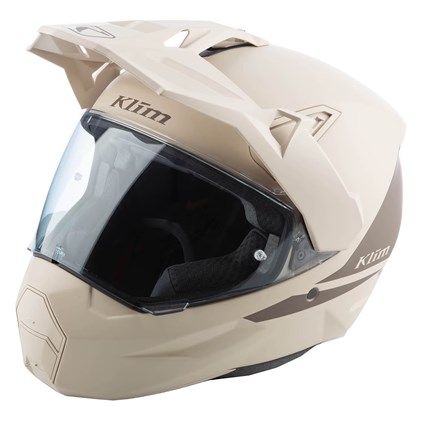- Menu
- JacketsMotorcycle Jackets
- HelmetsMotorcycle Helmets
- GlovesMotorcycle GlovesOther Categories
- BootsMotorcycle BootsOther Categories
- PantsMotorcycle PantsOther Categories
- JeansAll Motorcycle JeansOther Categories
- AccessoriesAccessoriesAccessoriesMotorcycle Luggage
- Ladies GearLadies Motorcycle Clothing
- Brands
- Sale
- Editorial
- Videos
- Sign In
- Register
Klim X1 Alpha helmet in concept high rise electric blue
(KLM2522)
£725.00
Finance available with Omni Capital Retail Finance from £ per month
More Info
Klim X1 Alpha helmet in concept high rise electric blue
x
If any UK retailer is selling anything at a price that is lower than ours, we will beat that price by a full 10%.For terms and conditions, click here.

(KLM2522)
£725.00
Finance available with Omni Capital Retail Finance from £ per month
More Info
Klim X1 Alpha helmet in concept high rise electric blue Product Information
The shell for the X1 has been designed by Klim; they didn't buy it off the shelf in the way they did the shell for the Krios Pro. The shell is all hand-laid carbon, and Klim talks about it being made with ‘pre-preg’ carbon fibres for the smoothest shell consistency, with the minimum amount of bubbles and imperfections.
At 1500g. in Medium in a graphic treatment the X1 is 150g. heavier than the same spec. Krios Pro. Yet the X1 still couldn't be termed 'lardy', coming in at some 150g. less than the benchmark helmet in this sector: the Arai Tour-X5.
The X1 comes in three different shell sizes. And in theory that will make a huge difference over the Krios Pro when it comes to getting a good fit. As is usually the case with three shell sizes, Large gets its own shell. XS,S and M share the smaller shell. XL, XXL and XXXL share the larger one.
There are five different eps sizes with the X1, which is what one might hope for. The XS and S sizes share an eps, M has its own unique eps, as does L and XL. XXL and XXXL share an eps. And this is what one might expect in a Shoei helmet; so it can be concluded that Klim has made all the right plays to try and get the X1 to fit the largest number of people.
One of the things that Klim seems particularly proud about on the X1 is the peak. Appropriate as they might look on certain bikes, peaks can be more trouble than they’re worth. They can cause buffeting as the oncoming air flows over the screen. They can oscillate at speed. They can generate added noise. And they can be particularly susceptible to cross winds. I accept obviously that a peak can help you block out the blinding effects of the low-lying sun, in the same way as a sun visor does in a car. But actually a small piece of tape about three inches by half an inch placed at the top of the visor can often do the same, and with far fewer side effects.
But Klim has apparently worked hard to get their peak to flow through the air with the minimum of disturbance. To this end the peak on the X1 is more solid, and with less channels than the peak on the Krios Pro.
One of the advantages of the peak on the Klim is the ease with which it can be adjusted between three different positions, even when you’re on the move. There’s a very simple sliding mechanism that works really well. But there's another thing here; if moving the peak doesn't work for you, it can be taken off really simply, and without tools. Klim suggests that you could again do this on the fly. If you do remove the peak there are blanking plates in the box to prevent turbulence around the recesses, and therefore extra noise. To the same end you also get a blanking plate for the peak’s slider mechanism.
The other thing that is super-easy to remove is the main visor. It’s held in place by means of a spring-loaded mechanism. Pull the visor away from the helmet and it pops out. No tools are required; it couldn’t be easier. Klim reckons that this means that the visor will never need adjusting. The mechanism should also help to keep out both the rain and the noise-inducing wind.
Klim tells us the visor is Class 1 optical quality. They also claim that the optical quality of their visor is not reduced by the top-of-the-range 120 Pinlock that comes in the box. And that may be true, but to be fair that's not a Klim thing; that's a Pinlock XLT (Extra Light Transfer) thing. The Pinlock, by the way, is a large one that covers almost the entire visor, meaning that it really should be pretty effective at combatting fogging issues.
In the box, as with the Krios Pro you get a Photochromic visor that darkens in the light. Klim also tells us that this, and their other tinted visors, come with a treatment to prevent the sun’s infrared heat being transmitted on to the face. You don’t get this with the clear visor.
In addition to the spring-loaded mechanism that should ensure a better seal between the visor and the shell, there’s more sophisticated, softer seal around the edge of the visor. The Krios had a PVC one. Again, this should help keep the wet stuff out.
Klim talk about a ‘crack’ position on the X1; and yes there is one, although as with many 22-06 helmets the crack position only really comes about as a result of the visor resting on top of the now-mandatory, visor, locking mechanism.
In addition to the supposed ‘crack’ position, the main visor has three detente positions. And they would appear to be reasonably robust. I can’t see the wind slamming the visor shut in any of them. Well at least not at road-legal speeds!
Obviously you can run the X1 without the peak. You can also run it without the main visor, with or without the peak; and yes even the largest Klim goggles can be accommodated in the visor aperture. We tried it out, and you should be able to wear spectacles in the X1.
Klim is making a big noise about the venting on the X1. They talk about the importance of keeping the rider's head cool, as an act of passive safety. The venting and what Klim refers to as the helmet’s ‘heat management’ system is all tied up with the helmet's liner.
Now in the Krios Pro the lining was mostly Koroyd, which is made up of hollow, plastic-looking tubes. It's clever stuff. It's incredibly light, absorbs the energy of an impact very uniformly, and does so equally well in the hot and the cold.
But apparently one of the problems with the Koroyd in the Krios Pro was that, on a really hot day, it allowed too much transfer of heat from the shell to the head. I can't say that this was a problem we came across a lot in the U.K. Well, in the X1, the Koroyd is sandwiched between two layers of expanded polystyrene (eps). And Klim has moved to this to prevent the aforesaid heat transfer from the shell.
The upper portion of the eps is channelled to allow air that comes into the helmet via the various vents to move through the helmet to cool the head, and exit through the exhaust vents at the back of the helmet. The Koroyd tubes also allow heat coming off the head to escape through those same vents. Bottom line? When you’re hot, the X1 is undoubtedly going to be effective at helping you to stay cool headed.
In terms of where the incoming air comes from, two vents on the chin direct air upwards into the helmet, although the upper vent directs air more specifically over the visor to prevent fogging. There are two more closable vents on the side of the shell that also direct air through the eps. Unusually, there is no vent top-centre on the X1. The hot air within the helmet can exit through two different sets of exhaust vents. Two are beneath the integrated aerofoil. Two are just above the neck roll.
Just a pointer. You can remove all the covers from all the vents to allow more air to enter the helmet. Just don’t come asking for replacements when you lose them, because you can bet your bottom dollar that Klim won’t be holding stock of them.
Another advantage to the new way in which the Koroyd is sandwiched between the two layers of eps is that the eps will also serve to better insulate noise; the noise that in the Krios was transmitted from the resonating carbon shell directly down through the Koroyd tubing to the rider's ears! And so whilst this new construction was created, according to Klim, to make the helmet cooler to wear, it will also make it somewhat quieter.
Klim also talks about the much improved quality of the X1’s interior facings. And I would say that that is correct. All the facings feel soft and comfortable next to the skin. And where the material does not touch the skin you get a lot of some kind of mesh material that is clearly aimed at improving breathability. You also get some perforated suede on the underside to add a touch of sophistication.
One of our major criticisms on the Krios Pro was the lack of substance in its cheekpads; and indeed a couple of years ago we did write to Klim with a selection of cheekpads from the likes of Shoei and Arai to show them how they needed to up their game. And so we’re glad to report that the cheekpads on the X1 are a great improvement. What’s more, we are told that we will eventually be able to change these pads out for ones of different thicknesses. In fact, we could do that on the Krios Pro but it never seemed to make much any because they could all be compressed to almost nothing!
I have read that we will be able to get different thicknesses for the headliner, but at the time of writing I haven’t had that confirmed. There’s also talk of foam shims being provided to help pad out the crown liner to improve the fit. But without the ability of Shoei’s PFS system to tell us what’s going on between the eps and the rider’s head we just can’t see how this is going to work effectively.
The X1 helmet is equipped with a permanent chin curtain, and Klim has clearly made an attempt to create a tighter neck roll to reduce noise. We really like stretch banding that runs through the neck roll, and that should make the helmet easy to get over the crown despite the tighter neck. This system works well. But, as one might expect, the neck roll is not flip-helmet tight, so I’m not sure how effective it will be at keeping wind noise out. It’s certainly a step in the right direction, though. In the box, by the way, you also get a second, more solid chin curtain that can be inserted at the front of the helmet.
Not quite sure why, but for the X1 Klim has dropped the Fidlock strap fastening. We thought it was clever. But as ever in this market, something new and unknown is always going to unnerve those bikers who don’t like change. Not sure if that’s the reason Klim has gone back to the double-D ring system; but what can be said about the D-ring is that it’s tried and trusted. On the X1, the rings are made from titanium.
Lastly, even though there was a dedicated comms. system for the Krios, it was a bit of a waste of time because you couldn’t hear anyone or anything anyway. Well for the X1 there’s no specific unit. There’s a good amount of space to mount a unit on the side of the helmet, but most comms. systems have a slightly curved inner profile, and in this area the X1 is very flat, so you may need some extra sticky pads. We watched one video review from an American retailer where the presenter explained how the thin, rolled, lower edge of the helmet would make it easy to use the clamping device many units come with. Well, I suspect he had never fitted a comms. to a helmet because a clamp simply won’t work on the X1. You’re gonna need the stickies!
What the helmet does have is good recesses for earphones. They will accommodate the largest 45 mm earphones, but there’s no special porting for the wiring, and there’s no way to route the cables neatly from the unit, although there is channelling inside the helmet for the speaker wiring. Our recommendation for the X1, by the way, would be a UCOM comms. from Interphone. The UCOMs are low profile, which is good for reducing noise. They’re powered by Sena and are totally reliable.
If there were issues with the Krios; and in our view there were quite a few; then it would appear that the X1 has been designed to address most of them.
The X1 is in every way a European-style adventure helmet. You could happily wear it off-road, but over here you have to do lots of road miles to find the few that are off it. And for that kind of riding the X1 is the type of helmet you want. What is clear is that Klim has pulled all the stops out to help ensure that the X1 works for the kind of people who found the Krios Pro a bit extreme.
It’s still a lightweight helmet, it’s got a peak, it will undoubtedly be quieter than the Krios Pro, it’s going to fit better than the Krios Pro and it’s going to be much more comfortable. As far as we’re concerned, the X1 Alpha is a better adventure helmet than the Krios Pro in almost every respect.
We are, we have to admit, a little taken aback by the price of the X1. It’s more expensive than the Arai Tour-X5. It’s more expensive than a Shoei Neotec. For us it’s a price that seems hard to justify. And feature-laden as it is, bits of the X1 still feel a bit on the flimsy side. It is no Arai, no Shoei, from a quality of construction perspective.
If you do want an X1, though, you should come and see us. Nobody knows more about helmet fitting than we do. And with a helmet that costs upwards of £700 this is a helmet you want to get right. If the Klim X1 Alpha doesn’t fit your head shape, or if it’s in any way uncomfortable that’s going to constitute an expensive mistake in anybody’s book.
Warranty
Klim helmets have a five year warranty
Product Reviews
Leave us your review
Finance Options
Deposit Amount: £
Monthly Payments: £
Loan Amount: £
Payment Term: months
Total Amount Payable: £



















































